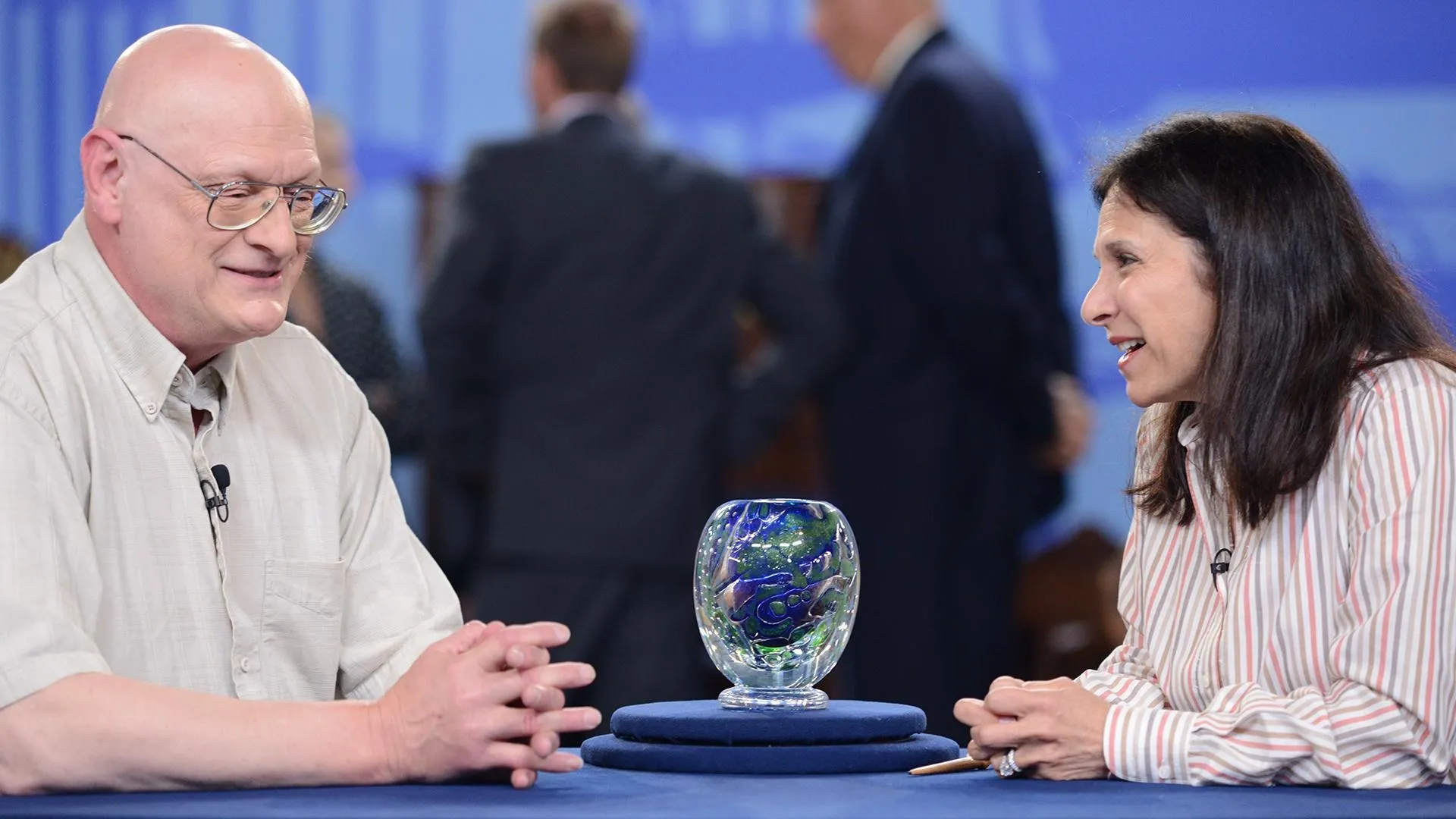GUEST: I brought a Orrefors Swedish glass vase. I've owned it for about four years. I purchased it at a thrift shop auction. And I liked it so much, I bid and I won the auction.
APPRAISER: What'd you pay for this?
GUEST: I paid $100 for it.
APPRAISER: What's the first thing you noticed about this?
GUEST: Well, the interesting graphics is that there's chameleons on the side, and the colors were very attractive as well.
APPRAISER: Well, I want you to know that this is probably the heaviest vase I have ever appraised.
GUEST: Yes, yes, it is very, very thick.
APPRAISER: First of all, it is Orrefors. It is actually signed on the bottom, which I know that you saw. It's signed, it's also signed by the artist down here, Edvin Öhrström.
GUEST: Yes.
APPRAISER: And then there's a little number 143E, which signifies the date when this was produced.
GUEST: Oh, I didn't know what that number meant.
APPRAISER: The design is unusual. You don't see too many Orrefors vases with the chameleon design. And the coloration is unusual. It also even has some aventurine in it. Aventurine are those little sparkles that you see, those little green sparkles, that's unusual, too. Now, the type of vase, it's called Ariel, A-R-I-E-L. And it was developed by Öhrström and Vicke Lindstrand, who were two people who were working at Orrefors at the time, along with the master glassblower, whose name was Gustav Bergqvist. Öhrström came there in 1936. He's a sculptor by trade. And they developed this in the late 1930s. I would probably date this somewhere between 1939 and 1950. Now, the reason why did they choose the name Ariel? It's actually named after the air spirit in Shakespeare's The Tempest. But it has something to do with air. The way this was made is that there was a hot molten blob of glass, what we call a parison. And when it was hot it would be carved and decorated, sometimes even sandblasted. And then this clear glass layer would be put over the parison. And air would get trapped.
GUEST: Oh, hence the bubbles and the design and stuff.
APPRAISER: Exactly, exactly. And hence the 15-pound vase.
GUEST: Yes.
APPRAISER: I love these things. I was very excited about it. It was unusual to see this foot. The other examples that I've seen, which are not... I've only seen in books, by the way. Sometimes they have higher collars and necks, but this one was always formed like this. This is the original shape. Nothing's been done to it. I did go over it with a fine-toothed comb to make sure. Your $100 investment, you did really well.
GUEST: Ah.
APPRAISER: You want to know how well?
GUEST: How well?
APPRAISER: I think in a retail shop, that this could sell for $35,000 to $45,000.
GUEST: Thousand? $45,000?
APPRAISER: Yes.
GUEST: (exhales)
APPRAISER: Examples like this from this time period, in this shape, in the form...
GUEST: (chuckles) Um... okay.
APPRAISER: This is a very special piece.
GUEST: I like it even more now.
APPRAISER: (chuckles) I'm not shocked.
GUEST: (chuckling): No.











